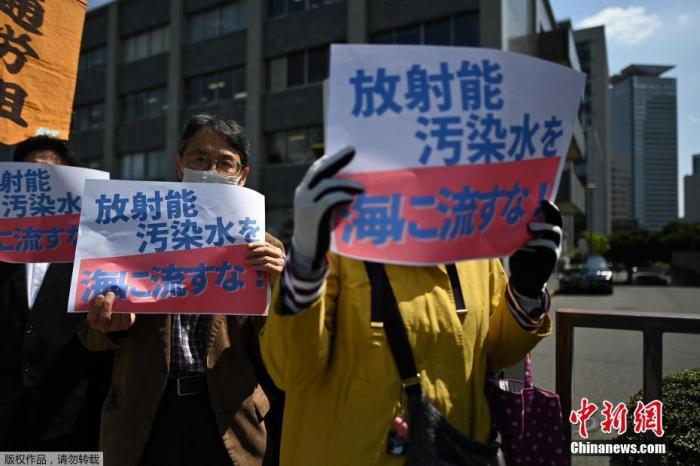China News Service, December 6th. According to Kyodo News, Japan’s Ministry of Economy, Trade and Industry announced on the 6th that the issue of nuclear sewage discharge from the Tokyo Electric Power Company’s Fukushima Daiichi Nuclear Power Plant was affected by the new variant of the new crown virus, Omi Keron. As a result of the spread, the International Atomic Energy Agency (IAEA) survey mission’s visit to Japan has been postponed from the originally scheduled mid-December 2021 to after January 2022.
Data map: Outside the prime minister's office in Tokyo, Japan, local people held a rally to protest the Japanese government's decision to discharge Fukushima nuclear sewage into the sea.
According to the report, in order to improve international transparency, the International Atomic Energy Agency (IAEA) investigation team plans to go to the Fukushima Daiichi Nuclear Power Plant in Japan to listen to Tokyo Electric Power Company's introduction on the state of nuclear sewage and discharge procedures, and to summarize its views on safety.
According to the Ministry of Economy, Trade and Industry of Japan, a working-level meeting will be held online in December to verify TEPCO’s forecast of radiation impact during sea discharge.
It was previously reported that in preparation for the discharge of nuclear sewage into the sea, Japan has successively carried out preparatory work such as surveys of the geological conditions of the seabed and testing of the stirring device at the bottom of nuclear sewage storage tanks.
On April 13, 2021, the Japanese government officially decided to filter and dilute the Fukushima nuclear sewage into the sea. The discharge time is expected to last 20 to 30 years. However, this move was met by residents of Fukushima Prefecture and the National Fisheries Union of Japan. Strong opposition from the Federation and the international community.

